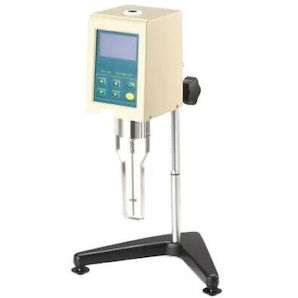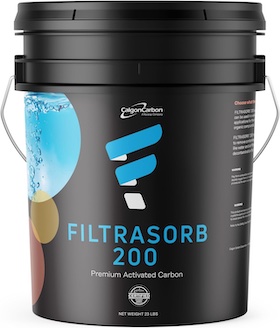
-----
Composite electroplating: electrolytic nickel plating with silicon carbide particles
Q. Anybody have any info they would care to share about composite electroplating? Specifically:
- the ceramic to be co-deposited in this particular case is silicon carbide. Do people usually pretreat this powder in some specific fashion?
- in addition to the nickel plating solution and the usual additives, are any sort of thixotropic or viscosity-enhancing agents ever added to the solution?
- is there a current density that is okay for nickel plating but too high or too low for good co-deposition?

Ted Mooney, P.E.
Striving to live Aloha
finishing.com - Pine Beach, New Jersey
Ted is available for instant help
or longer-term assistance.
1996
A. Regarding the composite electroplating, especially Nickel-SiC composite, Malathy Pushpavanam and her colleagues at Central Electrochemical Research Institute, Karikudi, India seem to have done some work. Her article, "Nickel-Boron Nitride Electrocomposites" published in Metal Finishing, p. 97, June 1995, mentions her earlier work on Nickel-SiC composites (references 4 and 5 in this paper). Also, the techniques she followed were described in references 3-6. Reference 3 is a paper published in Metal Finishing, vol. 30(4), p. 39, 1974. Unfortunately, I do not have copies of her other articles.
Hope this info is of some use to you.
Currently, we are also looking into this electrocomposite plating and plating of tungsten carbide particles. With respect to the tungsten carbide particles, we had some success with gold deposition. It is still in experimental stage at this time. We will keep you posted of our success.
Thanking you,
A. I do have a copy of a pretty good paper called "Electrochemical codeposition of inert particles in a metallic matrix" published in the Journal of Applied Electrochemistry, it lists about 56 references at the end, I can fax a copy if you think it might help, just let me know your fax no.
There is also a proprietary process called "Nikasil" on the market, this is an electrolytic nickel silicon carbide process, I think its supplied by LPW in Germany, its used in Europe on motorcycle cylinder bores, etc. Hope this helps
Regards
Richard
PS Like the hot line; great idea, it's a good way to chill out just browsing after a hard day at the tank side (aren't they all!)
A. Ted,
Are you still interested in this subject. Worked for a number of years with chromium carbide deposited out of a cobalt sulphate and there are a number of things that are helpful in keeping it plating.
- Navarre, Florida
![]() Thanks, all, for your willingness to help! At this point the particular project I was thinking of has been moved to the back burner, but I'm sure that I'll be back on the trail of composite plating hints on another project soon. Thanks again!
Thanks, all, for your willingness to help! At this point the particular project I was thinking of has been moved to the back burner, but I'm sure that I'll be back on the trail of composite plating hints on another project soon. Thanks again!

Ted Mooney, P.E.
Striving to live Aloha
finishing.com - Pine Beach, New Jersey
Ted is available for instant help
or longer-term assistance.
A. You're asking three questions.
For the 1st question, you have to pretreat your carbide powder for a good wetting by water (in alkaline solution, for example), and, if you want to use the SiC dissolution in nickel (up to 650 °C), you have to pretreat your powder in a fluorohydric solution to dissolve the SiO2 gangue.
It is possible to have a viscosity-enhancing by use of acrylic acid partially polymerized and stabilized by Fe. This product is commercially available under the name "COATEX P 90" (I don't know the distributor in the USA).
For the 3rd question Guglielmi is giving the answer in "Kinetics of the deposition of inert particles from electrolytic baths" (J. Electrochem. Soc., 119, 8, 1009-1012 ; aug. 1972). This work was confirmed by J.R. Roos et al. in the 10th Int. Cong. Met. Finish., Proc., 203-207 (1980), by C. Buelens et al. ("Electrochemical aspects of the codeposition of gold and copper with inert particles", J. Applied Electrochem., 13, 541-548, 1983). You can also read some papers written by P.K. Sinha et al. (plating, 60, 1, 55-59 ; 1973), M. Pushpanavan et al. (Met. Finish., 38-43 ; 1977), and so on
…
All these papers mentioned the relation between the state of polarization of the cathode (or, if you prefer, the current density) and the particle size. In my experience, it is possible to extend the Guglielmi model to the composite electroless deposits (in this case too, it is easy to define the Tafel's beta lines and to have a preview of the quantity of inert particles include in the deposit). I'd patented this technology in 1986 (us pat. 4 844 739) without any explanation.
I hope these informations were some use for you. My apologies for my bad English.
Best regards.
P.S. What a good idea this hot line! Now I'm sure I can help somebody or somebody can help me in my research. Thanks to finishing.com.
Chatillon - France
![]() Thanks for the great response, Pierre!
Thanks for the great response, Pierre!

Ted Mooney, P.E.
Striving to live Aloha
finishing.com - Pine Beach, New Jersey
Ted is available for instant help
or longer-term assistance.



